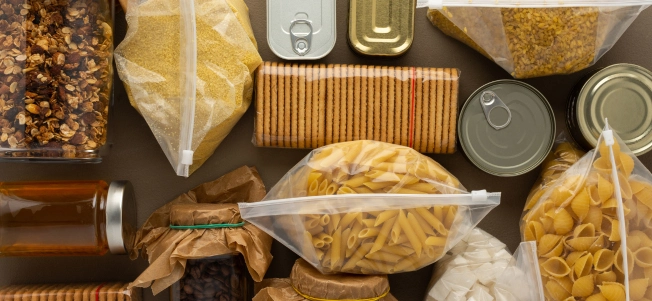Best Materials for Food Storage: What to Use and What to Avoid

Choosing the best materials for food storage isn’t just about keeping leftovers fresh—it’s about protecting your health and reducing waste. With so many options available, it can be hard to know which containers are actually safe, sustainable, and effective.
In this post, we’ll break it down simply so you can make better choices for your kitchen and your health.
Why Food Storage Materials Matter
Every time you store food, the material of the container touches what you eat. That means any chemicals in the material have the potential to leach into your food, especially when exposed to heat, oil, or acidity. Some containers are also more prone to holding onto smells or staining over time.
According to the National Institutes of Health (NIH), certain plastics contain substances like BPA (bisphenol A) or phthalates, which may disrupt hormones and have other long-term health effects. That’s why choosing the best materials for food storage matters more than you might think—it’s about both safety and sustainability.
1. Glass: A Top Choice for Everyday Use
Glass is widely considered one of the best materials for food storage. It’s non-toxic, doesn’t absorb flavors or stains, and is microwave- and dishwasher-safe. You can easily see what’s inside, which helps reduce food waste.
Look for containers with airtight lids—preferably with silicone seals—to keep food fresher for longer. Some glass containers are even oven-safe, making them perfect for both storing and reheating meals.
Best for: Leftovers, meal prep, sauces, and pantry storage
Watch out for: Breakability—handle with care
2. Stainless Steel: Durable and Safe
Stainless steel is another excellent choice when it comes to the best materials for food storage. It’s lightweight, durable, and doesn't react with acidic foods. It’s also fully recyclable and great for reducing plastic use.
One downside is that you can’t see inside stainless steel containers, so labeling can help keep things organized. They’re perfect for packed lunches, snacks, and dry goods.
Best for: On-the-go meals, snacks, grains, and baked goods
Watch out for: Not microwave-safe
3. Silicone: Flexible and BPA-Free
Food-grade silicone is rising in popularity for storage bags and lids. It’s flexible, non-toxic, and safe for the freezer, microwave, and dishwasher. Unlike some plastics, good-quality silicone doesn’t leach harmful chemicals into your food.
Look for products labeled as 100% food-grade or platinum silicone. Reusable silicone bags are a great alternative to single-use plastic bags.
Best for: Freezer storage, packed lunches, and leftovers
Watch out for: Quality matters—some lower-grade silicones may include fillers
4. Plastic: Use with Caution
While plastic is still widely used, it’s not always the best material for food storage—especially when reheating or storing hot or acidic foods. BPA-free plastics are safer than older versions, but studies suggest even BPA-free options can still leach chemicals under certain conditions.
If you use plastic containers, avoid putting them in the microwave or dishwasher, and replace them if they become scratched or cloudy.
Best for: Cold food storage or dry goods (short-term)
Watch out for: Leaching chemicals, especially when heated
5. Alternatives Like Beeswax Wraps and Cloth Bags
For wrapping or short-term storage, natural materials like beeswax wraps or cotton cloth bags offer eco-friendly options. These materials reduce waste and avoid contact with synthetic chemicals.
Best for: Sandwiches, produce, cheese, and wrapping snacks
Watch out for: Not suitable for raw meat or high-moisture items
Tips for Choosing the Best Food Storage Materials
Look for non-toxic, reusable, and dishwasher-safe options
Avoid containers with visible damage, peeling, or strong chemical smells
Match the material to the type of food and how you’ll store or reheat it
Label containers to reduce waste and improve organization
Choosing the best materials for food storage means making healthier choices every day—without having to overhaul your kitchen all at once.
A Healthier Kitchen Starts with Safer Storage
Making better choices about the materials you use to store your food can support your health and reduce your impact on the environment. By focusing on the best materials for food storage—like glass, stainless steel, and food-grade silicone—you’re protecting yourself and your loved ones from harmful chemicals while keeping your kitchen running more smoothly.
Want more tips for a healthier home living? Explore our Healthy Home section for more practical advice.
